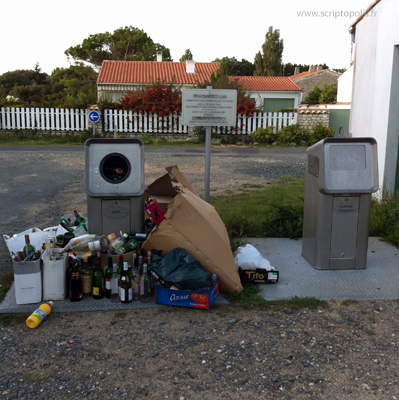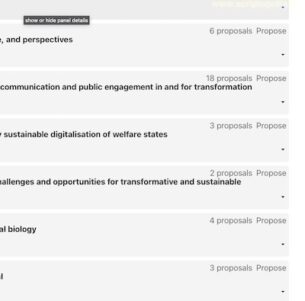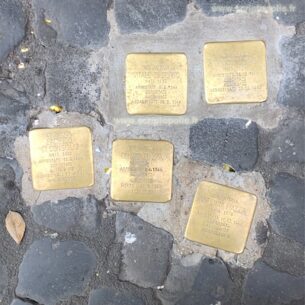Selective sorting

Sainte-Marie de Ré, august 2011.
As many other objects, trash cans have been able to speak for a long while. Some are simply labelled “trash”, while other are conceived to “recycle”. Various categories may coexist: some read “aluminum cans”, while others read “glass”, “plastic bottles”, or “paper only”. As mundane as they are, trash cans contribute to the ordering of the world by sorting things out in distinct categories and various networks of circulation for different kind of goods. But sometimes, they can do more.
Facing with the large amount of waste in one trash can reading “glass” and nothing in the other labelled “newspapers”, the passer-by may be led to several interpretations. Not only she can read the labels of trash cans to choose the right container, but also infers behavior from inhabitants. There is no doubt, in this neighborhood people are partial to a drink. And such an interpretation can be ascertained. In another neighborhood, the trash can devoted to “glass” is empty, while the one assigned to “newspapers” is full up. Here again, there is no doubt: people living there are literated and consume a lot of written objects.
Trash cans may be turned into reliable indicators of different practices, they can help to identify distinct “moral regions” – where some (deviant) behaviors are tolerated and others banned – dear to Robert Ezra Park, a pioneer of human ecology and urban sociology. But how long have reading and writing been discordant with drinking? One may infers the opposite interpretation: the trash can full of papers means that inhabitants are illiterated and throw away their newspapers without reading them), while the one full of bottles tells that people living there are inclined to the exhilaration of stories (they carefully read and archive they newspapers at home, and only throw away their empty bottles).






